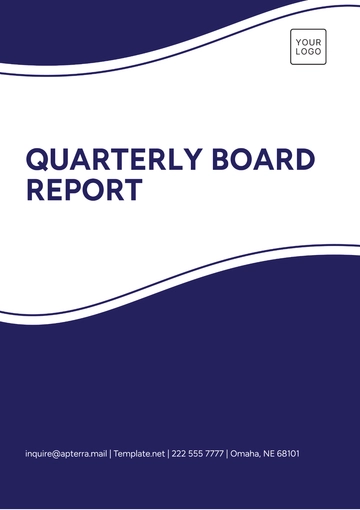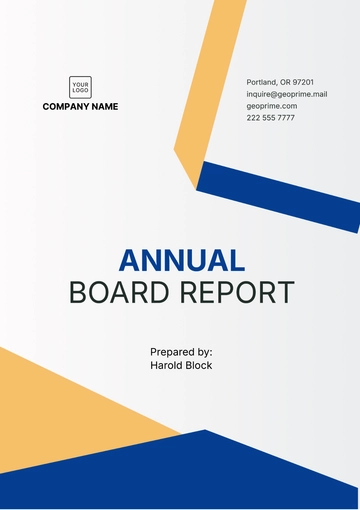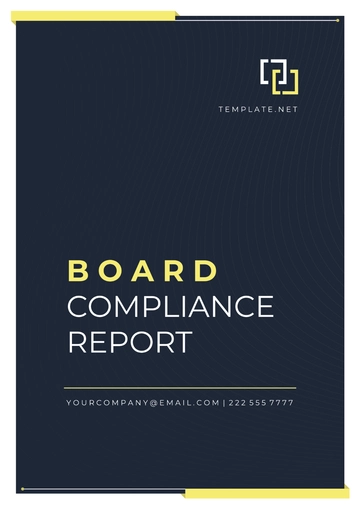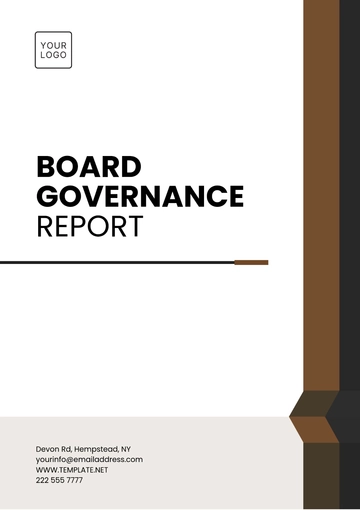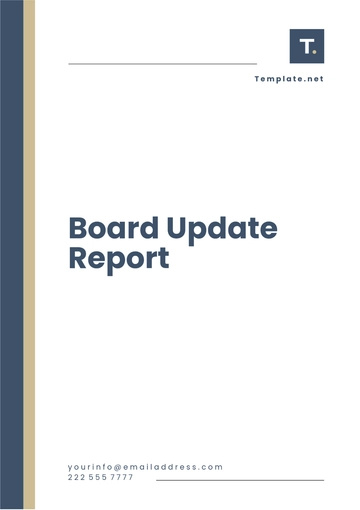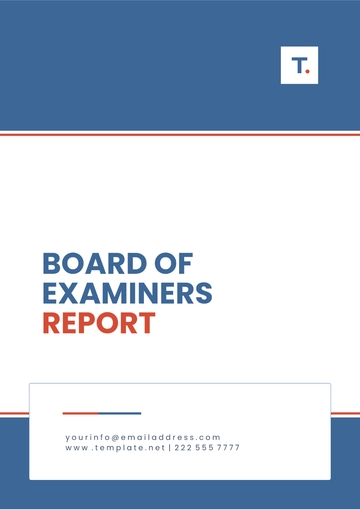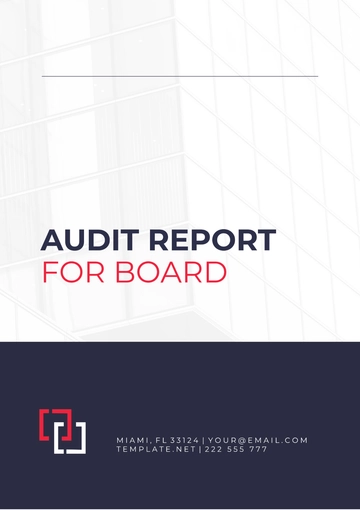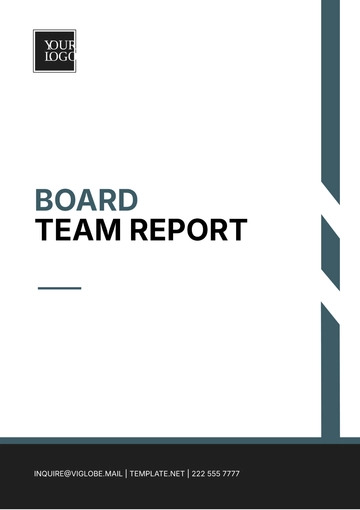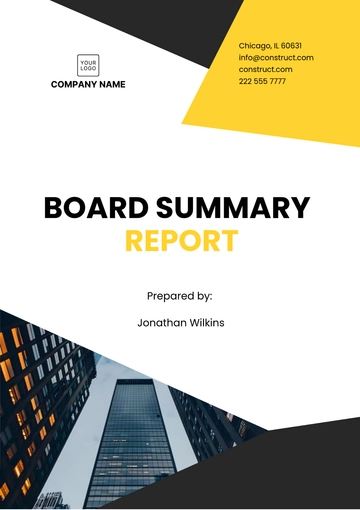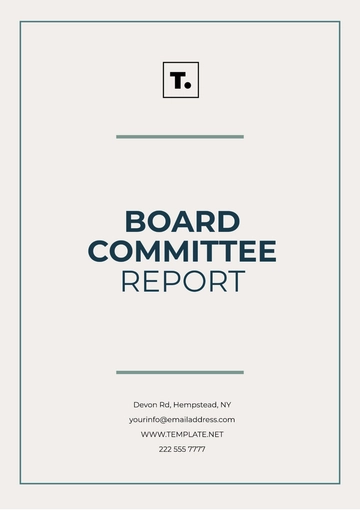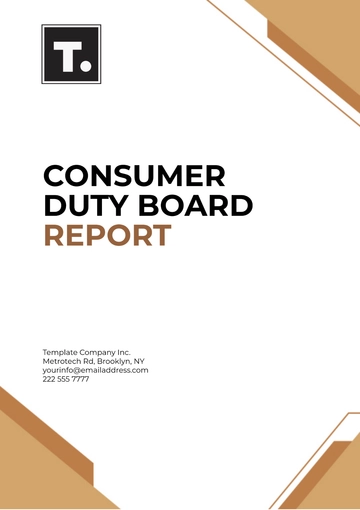Free Monthly Board Report
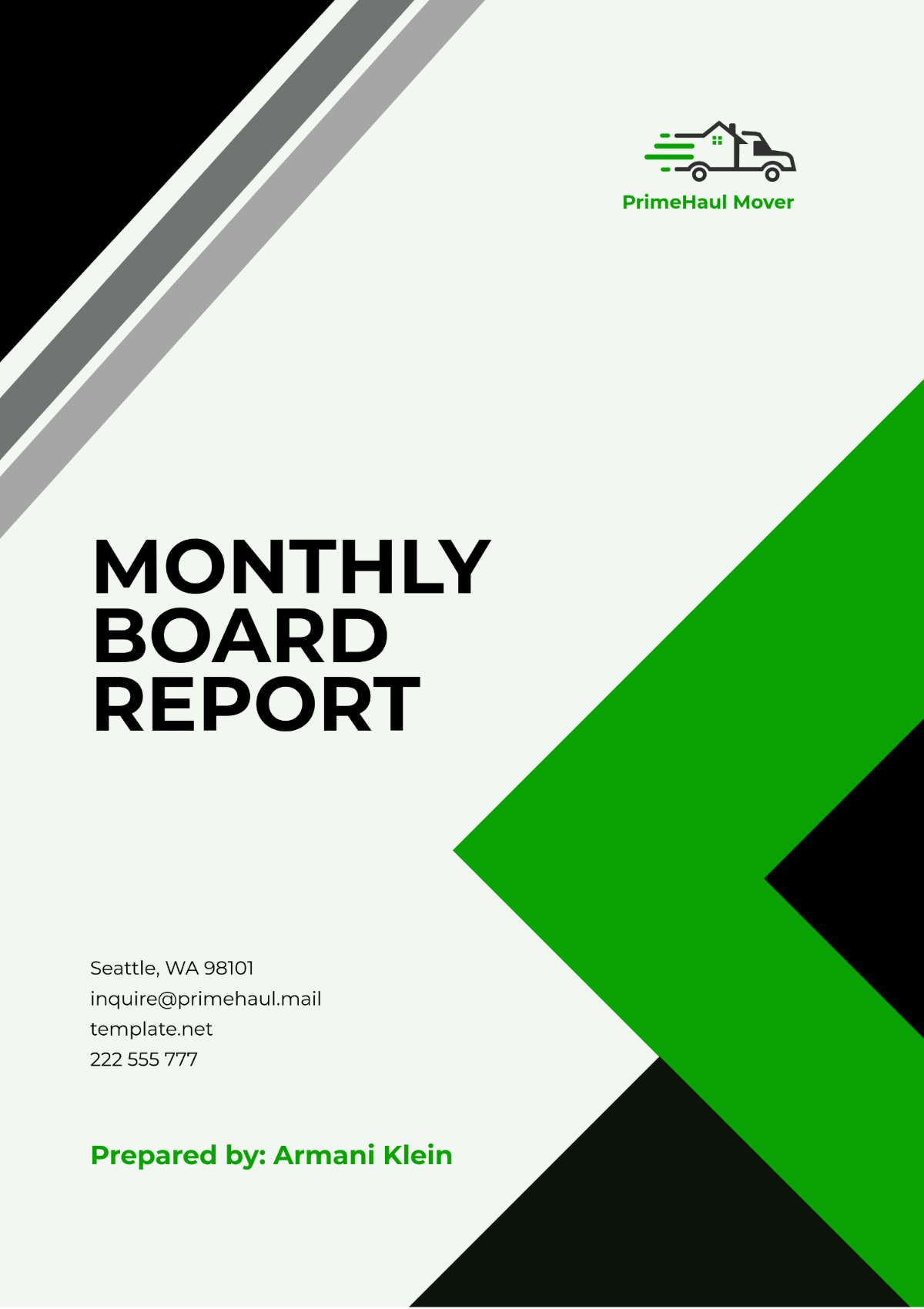
Prepared By | Company | Report Period |
|---|---|---|
[Your Name] | [Your Company Name] | October 2060 |
I. Executive Summary
The Monthly Board Report for the month of October 2060 provides a comprehensive overview of [Your Company Name]'s performance, strategic initiatives, financial health, and challenges and opportunities encountered during the reporting period. This report serves as a communication tool for the board of directors to assess progress, address challenges, and make informed decisions regarding future direction and investments.
II. Key Highlights
Financial Performance: Achieved a 15% increase in revenue compared to the previous quarter, driven by strong sales and cost management efforts.
Market Expansion: Successfully entered two new international markets, positioning the company for long-term growth and diversification.
Product Innovation: Launched three new product lines with innovative features, receiving positive feedback from customers and industry experts.
III. Financial Overview
Metric | Amount |
|---|---|
Revenue | $10 million |
Operating Expenses | $7 million |
Net Profit | $3 million |
Cash Flow | $2 million |
IV. Strategic Initiatives
During the reporting period, [Your Company Name] focused on several strategic initiatives aimed at driving growth, innovation, and sustainability. One key initiative was the digital transformation effort, which involved investing in digital infrastructure and technology upgrades to enhance operational efficiency and customer experience. By leveraging advanced digital tools and platforms, the company aims to streamline processes, improve service delivery, and stay ahead of evolving customer expectations in an increasingly digital landscape.
Another strategic priority was sustainability initiatives, reflecting the company's commitment to environmental stewardship and corporate social responsibility. Through the implementation of environmentally-friendly practices and initiatives, such as energy efficiency measures and waste reduction programs, the company seeks to minimize its carbon footprint and contribute to a more sustainable future. These sustainability efforts not only align with the company's values but also resonate with environmentally-conscious consumers, enhancing brand reputation and customer loyalty.
V. Challenges and Opportunities
Market volatility and economic uncertainties posed challenges, requiring agile strategies to mitigate risks and seize opportunities. The company faced increased competition from new entrants and existing players in the industry, necessitating continuous innovation and differentiation to maintain market leadership and customer loyalty.
Adapting to evolving regulatory requirements and compliance standards presented challenges as well but also presented opportunities for strategic growth and differentiation. By addressing these challenges head-on and capitalizing on opportunities, the company aims to navigate the competitive landscape successfully and drive sustainable growth in the long term.
VI. Next Steps
Market Expansion: The company will conduct thorough market research to identify potential growth opportunities in emerging markets. By leveraging market insights and consumer trends, the company aims to tailor its offerings to meet the unique needs and preferences of diverse markets. Strategic partnerships with local distributors and suppliers will be explored to facilitate market entry and establish a strong foothold in new territories.
Product Innovation: Continuous investment in research and development will drive product innovation initiatives aimed at enhancing existing offerings and introducing new solutions to the market. Collaboration with industry partners, technology vendors, and academic institutions will be fostered to leverage expertise and resources in emerging technologies and market trends.
Strategic Partnerships: The company will focus on strengthening existing strategic partnerships and forging new alliances to expand market reach and accelerate growth initiatives. Collaborations with complementary businesses, industry associations, and technology providers will be explored to unlock synergies and drive mutual value creation. Joint marketing campaigns, co-branded initiatives, and shared distribution channels will be leveraged to maximize market exposure and enhance customer engagement.
VII. Conclusion
[Your Company Name] has made significant strides in achieving its strategic objectives and driving sustainable growth during the reporting period. Despite facing challenges and uncertainties, the company remains resilient and adaptable, leveraging its strengths and capabilities to capitalize on emerging opportunities. Looking ahead, the company is well-positioned to continue its trajectory of success through market expansion, product innovation, and strategic partnerships.
- 100% Customizable, free editor
- Access 1 Million+ Templates, photo’s & graphics
- Download or share as a template
- Click and replace photos, graphics, text, backgrounds
- Resize, crop, AI write & more
- Access advanced editor
Keep your board members informed with the Monthly Board Report Template by Template.net. This customizable template provides a clear and comprehensive overview of your company's operations and performance. Downloadable and printable, it is also editable in our AI Editor Tool, allowing you to tailor the content to meet your board's specific requirements. Enhance your board meetings with this structured and detailed template.
You may also like
- Sales Report
- Daily Report
- Project Report
- Business Report
- Weekly Report
- Incident Report
- Annual Report
- Report Layout
- Report Design
- Progress Report
- Marketing Report
- Company Report
- Monthly Report
- Audit Report
- Status Report
- School Report
- Reports Hr
- Management Report
- Project Status Report
- Handover Report
- Health And Safety Report
- Restaurant Report
- Construction Report
- Research Report
- Evaluation Report
- Investigation Report
- Employee Report
- Advertising Report
- Weekly Status Report
- Project Management Report
- Finance Report
- Service Report
- Technical Report
- Meeting Report
- Quarterly Report
- Inspection Report
- Medical Report
- Test Report
- Summary Report
- Inventory Report
- Valuation Report
- Operations Report
- Payroll Report
- Training Report
- Job Report
- Case Report
- Performance Report
- Board Report
- Internal Audit Report
- Student Report
- Monthly Management Report
- Small Business Report
- Accident Report
- Call Center Report
- Activity Report
- IT and Software Report
- Internship Report
- Visit Report
- Product Report
- Book Report
- Property Report
- Recruitment Report
- University Report
- Event Report
- SEO Report
- Conference Report
- Narrative Report
- Nursing Home Report
- Preschool Report
- Call Report
- Customer Report
- Employee Incident Report
- Accomplishment Report
- Social Media Report
- Work From Home Report
- Security Report
- Damage Report
- Quality Report
- Internal Report
- Nurse Report
- Real Estate Report
- Hotel Report
- Equipment Report
- Credit Report
- Field Report
- Non Profit Report
- Maintenance Report
- News Report
- Survey Report
- Executive Report
- Law Firm Report
- Advertising Agency Report
- Interior Design Report
- Travel Agency Report
- Stock Report
- Salon Report
- Bug Report
- Workplace Report
- Action Report
- Investor Report
- Cleaning Services Report
- Consulting Report
- Freelancer Report
- Site Visit Report
- Trip Report
- Classroom Observation Report
- Vehicle Report
- Final Report
- Software Report





